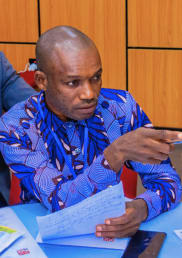UN SC Resolution 1325 Women, Peace and Security: Issues and instruments - the Afghan context
The peace and reconstruction process that was initiated with the establishment of a new government in Afghanistan provides the Afghans and the international community with an opportunity to draw on lessons learnt from within their own country and to benefit from experiences drawn from other post-conflict areas.
Dr. Huma Ahmed-Ghosh, a female Afghan intellectual, contends that Afghanistan’s economic marginalisation, social disorder and political dislocation can be conceptualised as deficiencies that women can manoeuvre to their advantage. She states that under the current economic conditions, women could use this opportunity to redefine their roles in the family and community in ways that improve their lives and contribute to the rehabilitation of the nation.
One of the key opportunities that needs to be seized is the pursuit of a gender-sensitive reconstruction process. If women are to assume their rightful place alongside men, mechanisms need to be put in place that take full account of the rights of both men and women. Instruments that are binding need to be drawn on in legal, judicial and civic reform to prevent discrimination against women in Afghanistan. United Nations Security Council (UNSC) Resolution 1325 in particular, emphasises the importance of women’s full participation in the rebuilding of their countries and highlights the unique contribution that women can make to peacebuilding and reconstruction efforts.
Yet gender is still not fully integrated into the reconstruction process. Although promoting gender considerations and gender awareness, and increasing women’s participation, is both challenging and complicated in the Afghan context, it is important for the promotion of sustainable development and a just and lasting peace. Gender inequality and women’s exclusion hinders progress by denying one half of the population equal opportunities.
Even though change takes time, Afghanistan can cite some progress in the area of women’s rights over the past three and a half years. The appointment of the new government has resulted in positive changes for women, for example, the mandatory wearing of the burqa was abolished and two women were appointed into the cabinet of ministers with portfolios for Women’s Affairs and Health.
The new Afghan Constitution adopted at the beginning of 2004 allows two seats in each province for women. Of more than 8 million Afghans who voted in the presidential poll of October 2004, more than 40 percent were female. During the democratic elections in Afghanistan, there was a woman among 16 presidential candidates.
Yet discrimination against, and abuse of women continues. For example, human rights abuses against women such as domestic violence and forced marriages are all too common. Many women in the country suffer from poor access to legal resources and exclusion from public life. Girls are still prevented from attending school due to traditions that keep them at home. Childhood and early marriages are still prevalent –some of which are entered into as a means of resolving disputes.





